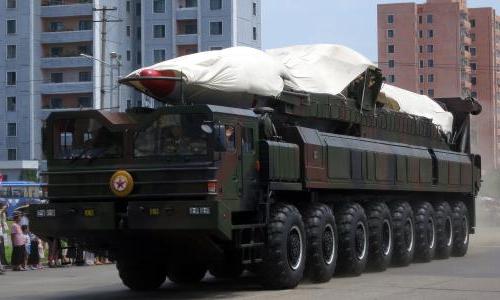Table of Contents
Unproven, unaccountable, and unhelpful for reducing the nuclear threat.
Six hours north of Anchorage, Alaska, lies a sprawling, snow-covered military base called Fort Greeley. Three thousand miles to its south, outside Lompoc, California, is another major installation—Vandenberg Air Force Base.
The two bases are linked by a unique security objective: to destroy nuclear-tipped missiles bound for the United States, should they ever be launched from North Korea or another hostile state.
Unfortunately, the United States has invested tens of billions of dollars in a system that has not proven to work under real-world conditions—a practical reality that more money and research won't fix. What's more, missile defense systems create other problems including potential overconfidence in the defense and incentive for adversaries to build more nuclear weapons.
How it works
Known as the “Ground-based Midcourse Defense” (GMD), the system’s basic premise is simple: incoming warheads are tracked by radar and satellite and targeted by defensive “interceptor” missiles, launched from the bases in Alaska and California—a task sometimes described as “hitting a bullet with a bullet.”
The Union of Concerned Scientists has analyzed the technical and political aspects of missile defense for more than three decades. Though the idea of a missile shield may sound attractive, today’s homeland system is hugely expensive, counterproductive, and offers no proven capability to protect the United States—and no credible path forward for achieving success.
Oversight & accountability
Missile defense is supposed to protect the US public. The evidence suggests that it doesn’t.
Most military systems face mandatory oversight and accountability requirements, developed to keep projects on-time, at-cost, and to make sure they work as the military needs them to work.
The current system—started by the Bush administration in a post-9/11 security environment—was exempted from many of the normal, routine, and important requirements and only parts of this oversight have been reinstated.
As a result, the system has had a poor test record even under a limited range of simplified conditions.
Early analysis by the Union of Concerned Scientists also showed how countermeasures like decoy warheads could easily defeat missile defense, an issue never credibly addressed by administration officials.
As it exists today, the system could not guarantee protection in a realistic scenario. It’s potentially dangerous: policy makers, misled to believe in missile defense’s effectiveness, may act in ways that increase the likelihood of conflict. It also can be a barrier to deep cuts in the nuclear arsenals of Russia and China, who cite it as a reason to maintain more weapons.
Space-based missile defense
Since the 1980s, various politicians have floated the idea of “space-based missile defense”—a system aimed at knocking missiles down, using interceptors stationed in orbit around the Earth.
The hypothetical benefit of such a system is that it is not susceptible to the kind of countermeasures that limit the effectiveness of the current ground-based system. The disadvantage is that it would be extremely vulnerable to anti-satellite weapons, prohibitively expensive, and highly provocative to China, Russia, and other nuclear-armed countries.






